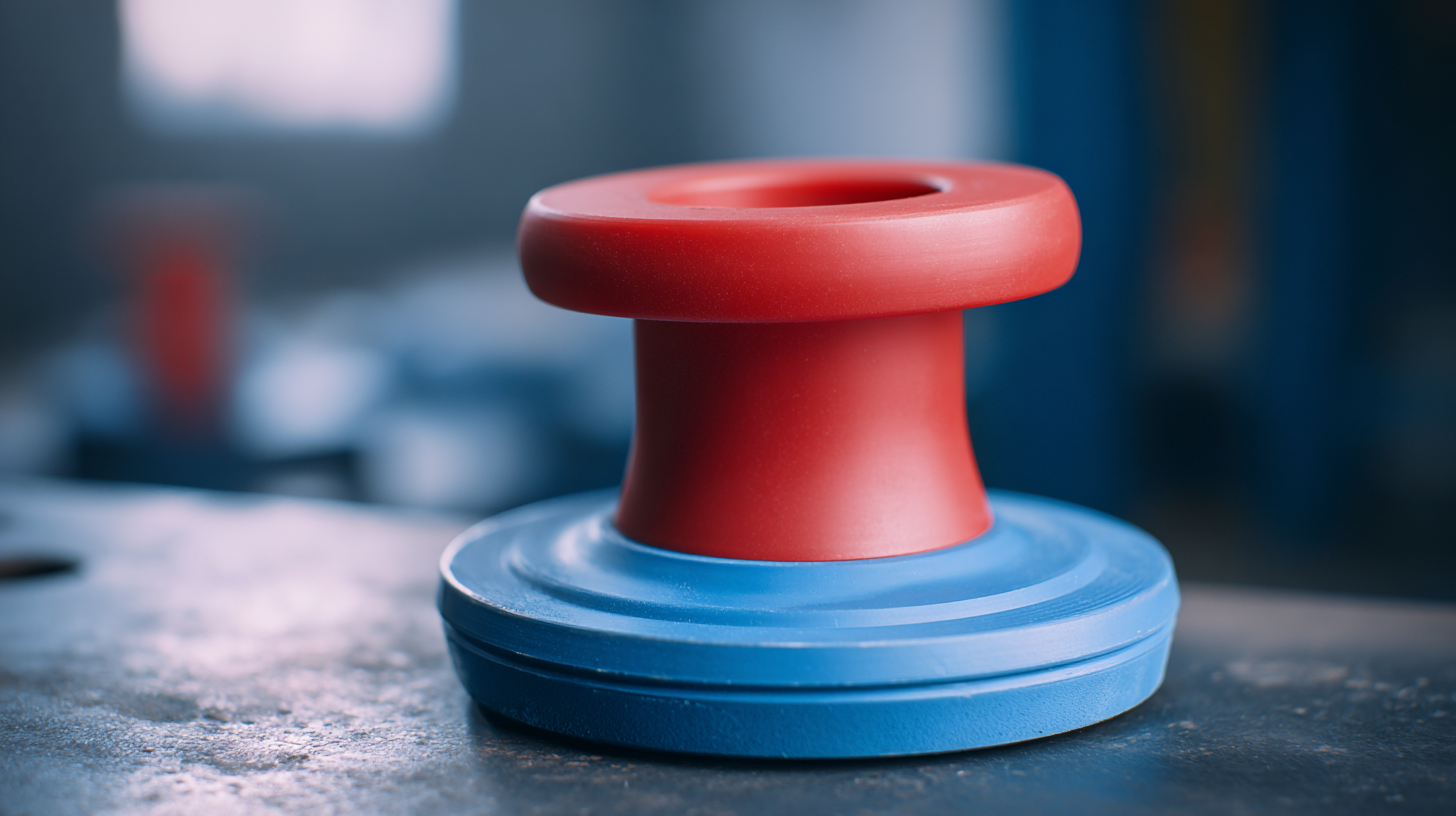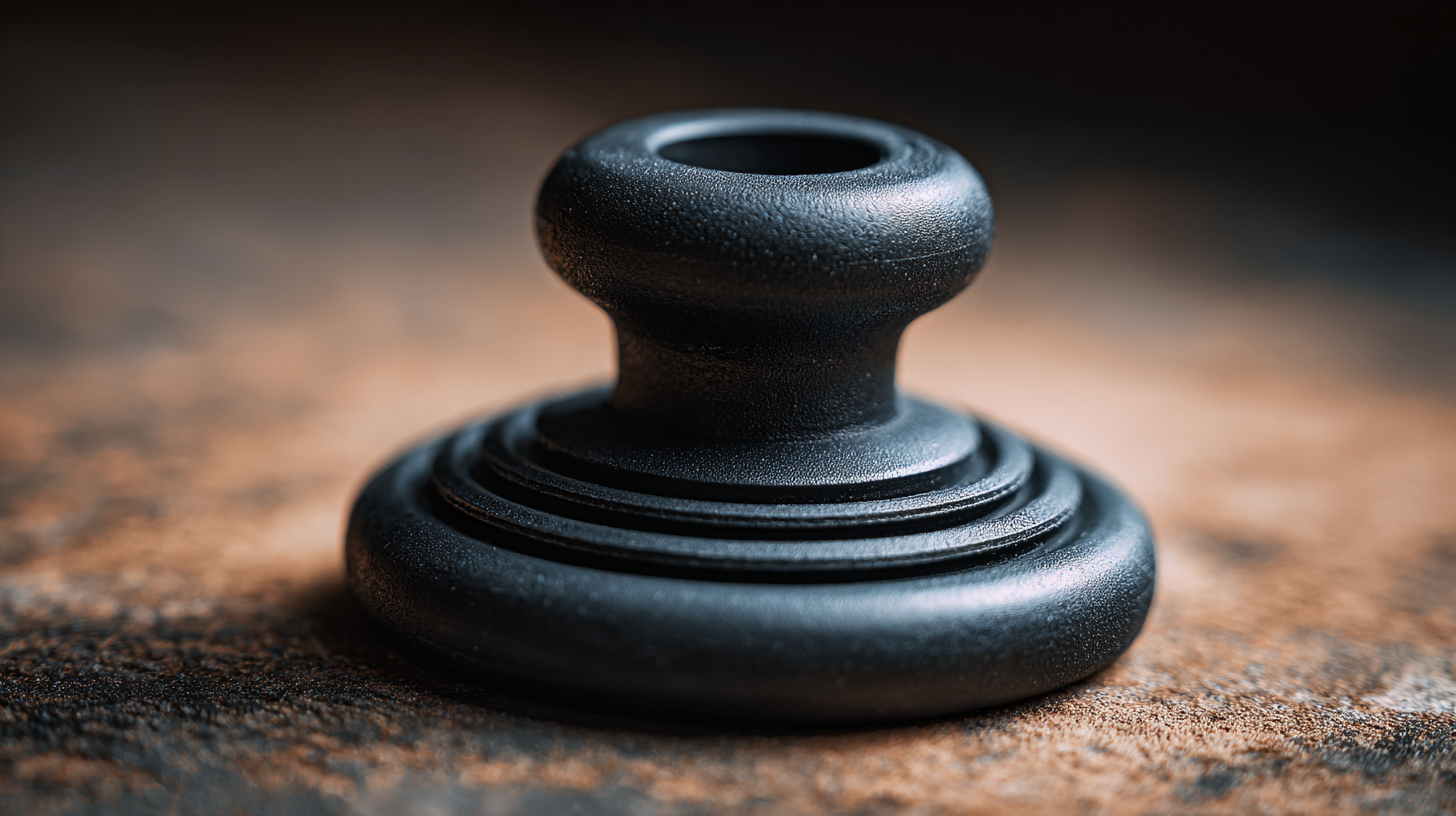Get a custom solution for free
-
Phone
-
E-mail
-
Whatsapp
-
Wechat


In the world of tools and accessories, the Rubber Suction Cup stands out as an essential component for achieving maximum grip and performance in various applications. Whether you're looking to secure items for a DIY project, mount devices on smooth surfaces, or ensure stability in your daily tasks, selecting the right Rubber Suction Cup can make all the difference. This ultimate guide will walk you through the crucial factors to consider when choosing the best suction cup for your needs, including material composition, size, shape, and load capacity. Understanding these elements not only enhances functionality but also ensures safety and durability in your applications. Prepare to dive into the depths of suction cup technology and discover how to elevate your grip and overall performance.

When selecting a rubber suction cup, understanding the material composition and hardness ratings is crucial for achieving optimal grip and performance. Rubber suction cups are typically made from various types of rubber, including natural rubber, silicone, and urethane. Each material offers distinct advantages; for instance, natural rubber excels in low-temperature applications but can degrade faster when exposed to UV light. Silicone, on the other hand, provides excellent temperature resistance and durability, making it suitable for a wider range of environments. Choosing the right material can significantly affect the suction cup’s ability to adhere to different surfaces.
Hardness ratings, measured on the Shore durometer scale, also play a vital role in suction cup functionality. Softer rubbers tend to conform better to uneven surfaces, creating a tighter seal and enhancing grip. In contrast, harder rubbers may offer better durability and resistance to deformation under load but might struggle to maintain a strong hold on rough or porous surfaces. Therefore, understanding the trade-offs of material hardness ensures that users can select suction cups that are tailored to their specific applications, whether it be for industrial use, household tasks, or specialized machinery.
When selecting rubber suction cups, understanding load capacity is crucial for achieving optimal grip and performance. The ability of a suction cup to hold weight largely depends on the surface texture it adheres to. Smooth, non-porous surfaces create a stronger vacuum, allowing for higher weight capacities. Conversely, rough or porous surfaces can compromise sealing, reducing the cup's effectiveness. Therefore, it’s essential to assess the surface conditions before making a choice.
**Tips:** Always consider the type of surface where the suction cup will be applied. For maximum grip, opt for suction cups designed for specific surfaces like glass or plastic. Additionally, ensure the surface is clean and free from dust or grease, as this will enhance the suction effect and increase load capacity.
Another factor to keep in mind is the weight of the items being lifted. A suction cup with a higher load capacity should be chosen for heavier objects, as exceeding the recommended weight can result in failure. Testing a smaller cup first can often provide insight into what size and type of cup will adequately meet your needs.
**Tips:** Use a suction cup with a larger diameter for heavier loads, as this increases the surface area for adhesion. Furthermore, incorporating a release grip mechanism can facilitate easy and safe handling of objects while maintaining the integrity of the suction during transport.

When it comes to selecting the right rubber suction cup, optimal size and shape play a crucial role in achieving maximum grip and efficiency. Different applications require different dimensions, and understanding these nuances can enhance both performance and safety. For instance, larger suction cups are ideal for supporting heavier items, while smaller ones excel in tasks requiring precision.
**Tip:** Always measure the surface area where the suction cup will be used. Ensure that the cup fits snugly for a secure hold. A properly sized cup will create an airtight seal, preventing any leaks and ensuring stability during use.
In addition to size, consider the shape of the suction cup. Flat cups are typically ideal for smooth, non-porous surfaces, while those with a convex shape may be more effective on uneven or textured surfaces. Matching the cup’s contours with the application surface maximizes contact area, enhancing grip strength.
**Tip:** Experiment with different shapes and materials for various environments. High-temperature applications may benefit from specialized rubber compounds, whereas softer materials can conform better to irregular surfaces, ensuring a robust seal.
| Application | Recommended Diameter | Optimal Shape | Material Type | Weight Capacity |
|---|---|---|---|---|
| Glass Installation | 100 mm | Flat | Natural Rubber | 10 kg |
| Automotive Parts Handling | 150 mm | Conical | EPDM | 15 kg |
| Packaging and Shipping | 80 mm | Flat | Silicone | 8 kg |
| Construction | 120 mm | Flat | Neoprene | 12 kg |
| Home Appliances | 90 mm | Dome | Buna-N | 9 kg |
When selecting rubber suction cups, understanding the environmental factors that affect their performance is crucial. Temperature is a key consideration, as both extreme cold and heat can significantly alter the rubber's flexibility and adhesion properties. In colder conditions, rubber can become rigid, losing its ability to conform to surfaces and form a seal. Conversely, high temperatures can lead to softening, allowing the suction cup to become misshaped, reducing its grip. Therefore, choosing a suction cup designed for specific temperature ranges can ensure optimal performance in various environments.

Pressure is another critical factor influencing the effectiveness of suction cups. These devices thrive under specific atmospheric conditions, and variations in pressure can impact their ability to maintain a vacuum. In low-pressure environments, suction cups may struggle to adhere effectively, which can compromise their functionality. Conversely, excessive pressure can lead to deformation or even failure of the suction mechanism. When selecting a suction cup, it’s essential to account for the pressure levels and ensure that the product is rated to operate efficiently under those conditions. By considering both temperature and pressure, users can maximize the grip and longevity of their suction cups in real-world applications.
When it comes to maintaining rubber suction cups, proper care can significantly extend their life and optimize performance. One of the most crucial tips is to clean the suction cups regularly. Use a mild detergent and warm water to remove dust and grime that can prevent a proper seal. After washing, ensure they are thoroughly dried before use or storage, as moisture can weaken the rubber over time.
Another key maintenance practice is to inspect your suction cups for any signs of wear or damage. Look for cracks, tears, or areas of brittleness, as these can drastically reduce their grip and effectiveness. If any imperfections are found, it is best to replace the damaged cups immediately to ensure safety and performance.
Lastly, proper storage is essential for prolonging the lifespan of your rubber suction cups. Store them in a cool, dry place away from direct sunlight, which can cause the rubber to degrade. Rolling or stacking cups can lead to deformation; instead, consider hanging them up or keeping them in a flat container to maintain their shape and functionality.






